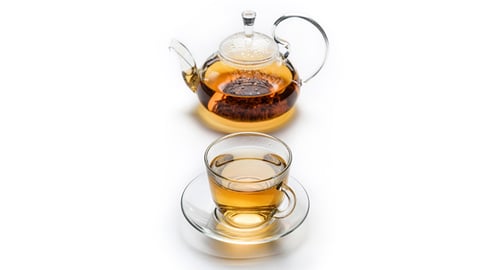Four things to know about tamarind
Tangy enthusiasm
The fruit of a tropical tree native to Africa and harvested in India, South Asia, the Caribbean, and Central and South America, tamarind has gained fans for the tasty caramel-hued, thick sticky flesh found inside its pod-shaped shell. Tamarind contains a nutrient-rich, fibrous pulp that has a unique sweet-sour flavour.
“There is nothing like it, though a Meyer lemon comes close,” explains Jo-Ann McArthur, president and founding partner of Nourish Food Marketing.
McCormick, which manufactures, markets and distributes spices, seasoning mixes, condiments and other flavouring products, declared tamarind its “2024 Flavour of the Year.” Hadar Cohen Aviram, McCormick’s executive chef and senior manager of culinary development, says tamarind’s “tang elevates dishes to make them more craveable.” And as a beverage sweetener, it adds “brown flavour notes like raisin and molasses,” she says.
Tamarind is typically sold as a chutney, dip or marinade, Nourish’s McArthur notes. For instance, Farm Boy’s private-label line includes an Indian Appetizer Trio of mini samosas and pakoras with a tamarind dipping sauce. Voilà by Sobeys offers Mitchell’s Tamarind Sauce, Shan Tamarind Chutney and Divya Seedless Tamarind. Some Loblaws locations carry KFI Tamarind Hot Sauce and a Tamarind Soup Base from Knorr
Sweet substitute
Tamarind is rich in vitamin C and is high in fibre and magnesium, and its consumption has been linked to lower blood sugar levels of individuals with diabetes. “It has a great nutritional profile,” says McArthur of Nourish. McCormick’s Cohen Aviram loves that the tropical fruit’s sweetness can be used as a substitute for sugar and “its natural acidity to cut some sodium out,” making dishes healthier, but still tasty. It’s one of the reasons McCormick developed the Tamarind and Pasilla Chile Seasoning. Currently only available in the United States, the company has not ruled out a Canadian launch.
Exactly right
The global market for tamarind extract is forecasted to grow 6.9% between 2022 and 2032, topping US$792 million, according to a study from Fact.MR. While Asia Pacific is the largest tamarind extract market, demand in North America is expected to “gain traction on the back of the surging trend of veganism in the U.S.,” the study notes. It also notes the cosmetic and personal care sector is a “major driver of demand” for tamarind products due to their anti-aging and hydrating properties.
Foreign flavour
Caribbean Corner in Toronto’s Kensington Market sells tamarind as a paste, juice, dried and in the shell.
“You can break the shell and either put the pulp in a glass jar with some hot water and shake it to make tamarind juice or remove the fruit from the seed and roll it in sugar to make candy,” says Joannah Grant, who owns the specialty grocer with her mother. “A staple food for certain countries and Canadians from the Caribbean,” Grant adds that it’s “especially popular at this time of year as people look to ward off colds.”
Last year, tamarind was the fastest-growing flavour for Jarritos, a brand of fruit-flavoured Mexican sodas that launched in Canada 10 years ago and is sold at retailers such as Metro, Real Canadian Superstore and Zehrs. Walmart Canada will carry the brand starting in May.
The distribution of its tamarind flavour in Canada is not yet as big as better-known flavours such as lime and mango, but it grew “close to triple digits in 2023.” As for the rise in popularity, Santiago Behar, country manager for Jarritos Canada, credits what he calls “dream keepers” – people who “love to embrace other cultures. As such, we have seen more and more acceptance of Mexican flavours in the Canadian market.” Compared to the international aisle, “the brand sells way more when we are in the soda section,” says Behar. “We struggled with it being categorized as a beverage for the Hispanic community, but have been able to change the buyer’s mindset and let them know that we belong in the craft soda section.
This article first appeared in Canadian Grocer’s March/April 2024 issue.





